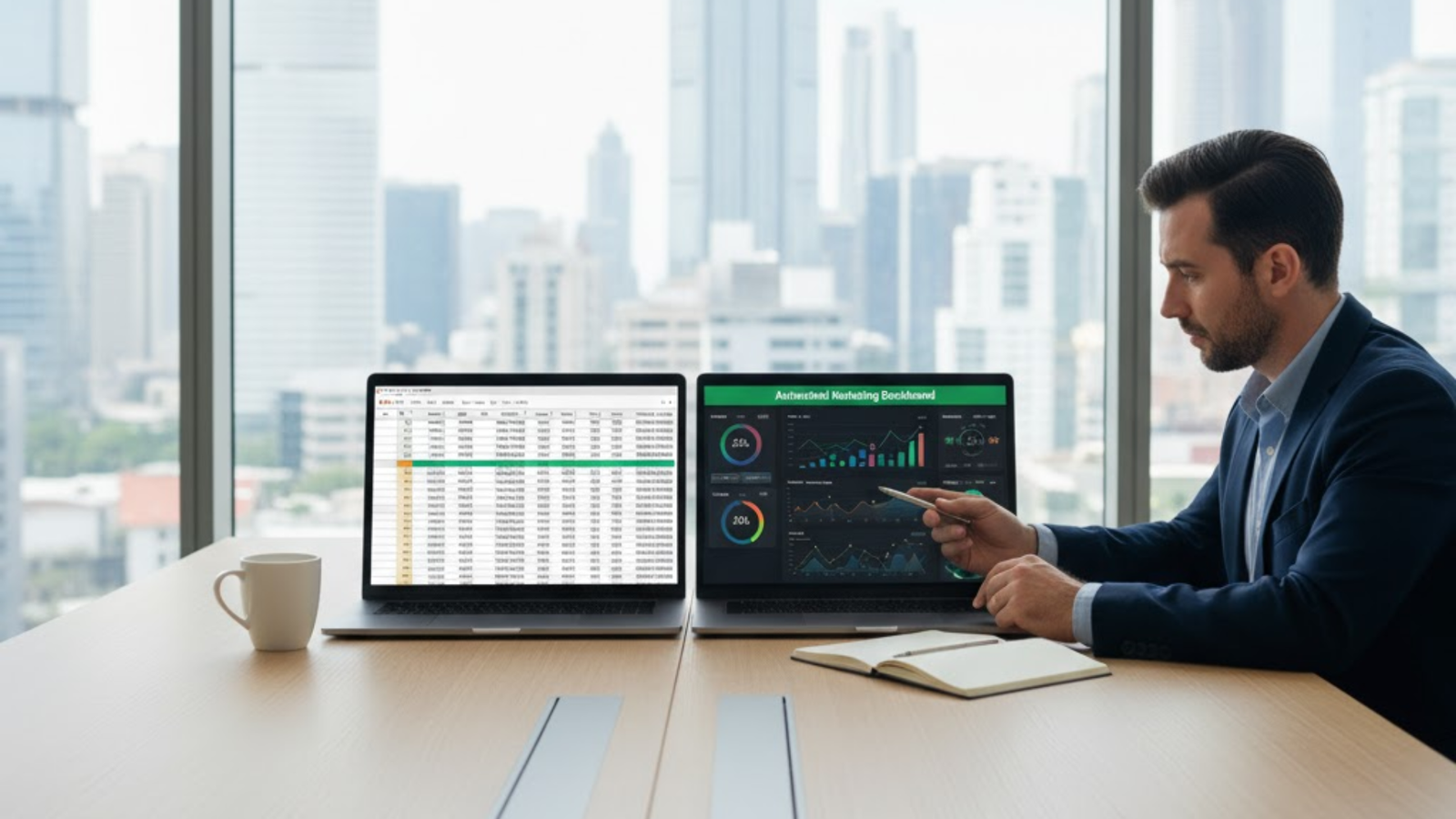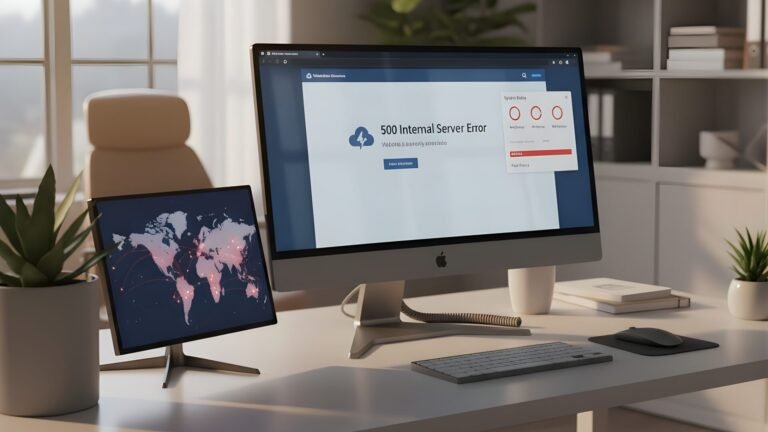Advertising in 2025 is no longer about guesswork, spreadsheets, or human intuition alone. The digital marketing ecosystem has grown far too complex for manual budget allocation to keep pace. Between fluctuating ad costs, changing audience behaviors, and platform algorithms that update weekly, traditional budgeting methods often result in wasted spend and missed opportunities.
With AI in marketing taking center stage, businesses now rely heavily on ad automation and intelligent ad budgeting software to make data-driven decisions in real time. The shift isn’t just about convenience—it’s about survival in a hyper-competitive advertising landscape where milliseconds and micro-budgets can decide campaign success.
This article explains why manual ad budgeting has become obsolete in 2025, how automation and AI-driven systems are redefining efficiency, and why the future of advertising depends on intelligent automation.
1. The Complexity of Modern Advertising
1.1 The Explosion of Digital Channels
A decade ago, advertisers primarily focused on Google and Facebook. In 2025, the landscape includes Instagram, TikTok, YouTube Shorts, LinkedIn Ads, X (formerly Twitter), and programmatic ad networks—each with its own bidding system, targeting algorithm, and ad performance metrics.
Managing budgets manually across these platforms is not only time-consuming but also error-prone. A marketer might spend hours adjusting bids and reallocating budgets based on incomplete data, leading to inconsistent results and higher cost per acquisition (CPA).
1.2 Real-Time Market Shifts
Ad pricing dynamics fluctuate minute by minute. A campaign performing well in the morning can turn inefficient by evening due to competitor activity or algorithmic changes. Manual intervention cannot match this pace. Automated systems, however, monitor performance continuously and reallocate budgets instantly, ensuring optimal use of every ad dollar.
2. Why Manual Budgeting Fails in 2025
2.1 Lag in Decision Making
Manual processes depend on human judgment and delayed reporting. Even if teams analyze data daily, they miss real-time opportunities. For instance, if a particular ad set on TikTok starts outperforming others, waiting 12 hours to reallocate budget could mean losing thousands in potential reach.
Ad automation eliminates this lag by using predictive analytics to adjust budgets in milliseconds.
2.2 Inability to Process Complex Data
Modern campaigns rely on hundreds of metrics: CTR, CPC, ROAS, frequency, engagement score, conversion paths, and even attention time. Analyzing such multidimensional data manually is unrealistic. AI in marketing now enables automated platforms to interpret these variables simultaneously, identifying which ads deserve more budget and which should be paused—something spreadsheets can’t achieve.
2.3 Wasted Human Effort
Teams that still rely on manual budgeting often spend more time maintaining dashboards than strategizing. The administrative load diverts creative and analytical talent from tasks that genuinely drive performance—such as copy testing, audience refinement, and cross-channel alignment.
Automated systems offload this repetitive work, enabling marketers to focus on innovation rather than manual recalibration.
3. The Rise of AI-Driven Ad Automation
3.1 How AI Powers Modern Campaigns
Artificial intelligence has fundamentally changed how ads are optimized. Using machine learning models, ad automation platforms predict which audiences will convert, what time of day performs best, and how much budget each ad group should receive.
For example, AI systems trained on historical performance can automatically detect underperforming segments and reassign budget toward high-intent users. This continuous learning loop ensures maximum efficiency and ROI.
3.2 Predictive vs Reactive Budgeting
Manual budgeting is reactive—it adjusts after results appear. AI-driven systems are predictive—they anticipate results before spend occurs. This predictive capability allows advertisers to prevent wasted expenditure rather than fix it afterward.
Predictive models analyze thousands of prior campaigns, market signals, and behavioral trends to forecast outcomes, making modern ad budgeting software both proactive and adaptive.
3.3 Unified Cross-Platform Optimization
AI unifies data across ad platforms, something manual management can’t achieve effectively. Whether campaigns run on Meta Ads, Google Display Network, or LinkedIn Sponsored Content, automation tools aggregate performance metrics into a single dashboard, enabling unified budget decisions.
In 2025, this cross-channel intelligence is essential to maintain consistent brand performance and cost efficiency.
4. The Economic Cost of Staying Manual
4.1 Increased Budget Waste
Manual budgeting often results in overspending on low-performing campaigns or underfunding high-potential ones. Without automated insights, teams may misinterpret short-term data spikes as long-term trends. Over time, this causes inefficiencies that directly reduce ROI.
A 2025 study by DataBridge Marketing Analytics shows that companies using ad budgeting software achieve, on average, 37% higher return on ad spend (ROAS) compared to those relying on manual processes.
4.2 Missed Scaling Opportunities
Automation allows instant scaling of winning campaigns—something impossible with manual workflows. Once an ad set hits a performance threshold, AI systems automatically expand its reach or duplicate it across relevant audiences, maintaining performance consistency at scale.
4.3 Hidden Human Costs
Beyond direct budget waste, manual management incurs hidden costs: long working hours, burnout, human errors, and slower campaign launches. Businesses that adopt automation not only save money but also improve team efficiency and morale by reducing repetitive workload.
5. AI in Marketing: The Strategic Advantage
5.1 From Data Collection to Intelligent Decision Making
AI no longer serves merely as an analytical assistant—it’s now a decision-making partner. Advanced marketing systems integrate machine learning, predictive analytics, and natural language processing to generate actionable insights. These systems not only tell marketers what happened but also what should happen next.
5.2 Automated A/B and Multivariate Testing
AI-driven tools continuously test ad variations—headlines, visuals, CTAs, and even targeting combinations. This process runs autonomously in the background, reallocating budget to top-performing versions without waiting for human approval. Manual A/B testing simply can’t compete in scale or speed.
5.3 Adaptive Learning Across Seasons and Events
AI models evolve with time. They learn from seasonal patterns, audience behavior shifts, and external events such as holidays or market fluctuations. For example, during festival seasons or Black Friday, AI algorithms anticipate increased competition and automatically adjust bidding strategies, ensuring visibility without overspending.
6. Real-World Benefits of Automated Ad Budgeting
6.1 Precision Budget Allocation
Ad automation tools allocate every dollar where it yields the highest return. For instance, if performance on one platform drops by 10%, AI redistributes funds toward channels with better engagement instantly. This dynamic optimization ensures sustainable growth even in volatile markets.
6.2 Performance Forecasting and Scenario Planning
Modern ad budgeting software not only manages spending but also predicts future outcomes. Businesses can simulate how shifting 10% of their Google Ads budget to TikTok might affect overall ROI. Such predictive simulations, powered by AI, minimize risk and optimize decision-making accuracy.
You can also use free tools like Flutebyte’s Ad Spend Calculator to analyze spend efficiency and identify potential savings across campaigns.
6.3 Cross-Channel Attribution Accuracy
One of the most challenging aspects of manual advertising is attribution—determining which channel truly drives conversions. AI models apply probabilistic and data-driven attribution techniques, assigning value to every customer touchpoint. This ensures that budgets are not biased toward the last click but rather distributed according to real influence.
7. Privacy, Ethics, and the Automation Balance
7.1 Responsible AI Usage
While automation brings immense efficiency, 2025 also raises questions about data ethics and algorithmic transparency. Leading ad platforms now comply with global privacy regulations like GDPR, CCPA, and UAE’s DP Law. AI in marketing must prioritize consent, data security, and responsible targeting to maintain brand trust.
7.2 Human Oversight Still Matters
Automation doesn’t mean full replacement of human expertise. The most successful advertisers combine AI precision with human creativity and strategic judgment. Human teams still define goals, craft messaging, and interpret insights—while automation executes and optimizes them continuously.
8. Preparing for the Future of Automated Advertising
8.1 Integration Across Business Systems
In 2025, ad automation extends beyond marketing departments. Integrated systems connect ad budgeting software with CRM platforms, e-commerce dashboards, and sales analytics tools. This unified data ecosystem ensures that every rupee or dollar spent on ads aligns directly with measurable business outcomes.
8.2 Continuous Learning and AI Model Training
AI-driven platforms improve as they process more data. Continuous learning cycles mean that each campaign iteration enhances prediction accuracy. Businesses that have automated early enjoy exponential improvements in targeting and efficiency over time.
8.3 The Inevitable Shift to Automation
As advertising complexity increases, manual budgeting will soon be viewed as outdated as print ledger accounting. Automation isn’t an optional upgrade—it’s an operational necessity. Companies still relying on spreadsheets and manual controls will struggle to compete with AI-powered campaigns that optimize in real time and scale globally within hours.
Conclusion
The era of manual ad budgeting is effectively over. In 2025, advertising success depends on intelligent automation, predictive analytics, and unified decision-making powered by AI in marketing. Manual methods simply cannot match the speed, precision, and adaptability required in today’s fast-changing digital ecosystems.
Modern ad budgeting software enables real-time optimization, cross-channel consistency, and measurable cost efficiency. By eliminating human error and leveraging AI insights, businesses gain not just higher ROI but also strategic clarity.
The organizations that thrive in 2025 are those that integrate ad automation into every stage of their campaign lifecycle—from planning to performance tracking. The tools exist, the data is abundant, and the competitive edge now lies in adopting intelligent systems that make advertising smarter, faster, and more profitable.
Call to Action
Flutebyte Technologies helps businesses modernize their digital infrastructure through cutting-edge automation and intelligent platforms. From web development and Shopify solutions to SaaS development, custom software, and AI-driven IT services, Flutebyte builds systems that maximize growth efficiency.
To future-proof your business with automation and advanced analytics, visit Flutebyte Technologies and take the first step toward smarter marketing and better ROI.
Frequently Asked Questions (FAQs)
1. What is ad automation and how does it work?
Ad automation uses AI-powered algorithms to automatically allocate ad budgets, optimize bids, and adjust campaigns in real time. It eliminates manual intervention and ensures that spending aligns with performance across platforms.
2. Why is manual ad budgeting considered outdated in 2025?
Manual budgeting can’t keep up with real-time market changes, multi-platform campaigns, or complex data sets. Automated systems process large volumes of information instantly, leading to faster and more accurate budget decisions.
3. What advantages does AI in marketing offer for advertisers?
AI enhances targeting precision, predicts audience behavior, personalizes ad delivery, and continuously optimizes campaigns. This leads to higher ROI, reduced wastage, and better scalability compared to traditional methods.
4. How does ad budgeting software help in campaign performance?
It centralizes ad spend management, forecasts ROI, simulates scenarios, and adjusts budgets dynamically based on live results. It also integrates with analytics tools to ensure full transparency across all ad platforms.
5. Can small businesses benefit from ad automation?
Yes. Modern automation tools are scalable and cost-effective. Even small advertisers can leverage AI-based systems to improve ad performance, minimize budget waste, and compete effectively in larger markets.
Sources
- Google Ads Resource Center – Automation in Ad Campaign Management
- HubSpot Research – The State of AI in Marketing 2025
- DataBridge Marketing Analytics – ROI Impact of Automated Ad Budgeting (2025)
- Statista – Global Digital Advertising Trends 2025
- Flutebyte Technologies – Ad Spend Calculator Tool
Would you like me to format this for WordPress/Elementor (HTML headings + SEO meta structure) or export it as a ready-to-publish .docx blog file next?




